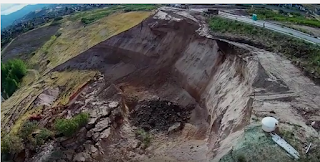With rest time over, it's time to get to get moving again. We continued up higher and soon came across the zone of wastage. We had to hike for a few miles to get to that point so they knew that the glacier had a negative glacial balance. With the higher temperatures in the area and the decreased snowfall that last couple of years, they were not surprised. As they climbed even higher we came across a few small crevasses and they could see the snowline not much farther, so they knew they wouldn't be able to get much higher with the equipment they had packed. With one final look around at the majestic beauty, they noticed the arêtes and the horn projecting high above.
Of course, the hike home is always easier than the way up, and just before nightfall they were back to camp enjoying a delicious dinner and retelling the stories of the adventure they had that day. They are determined to return every year in hopes of finding new ways to explore this majestic glacier.











